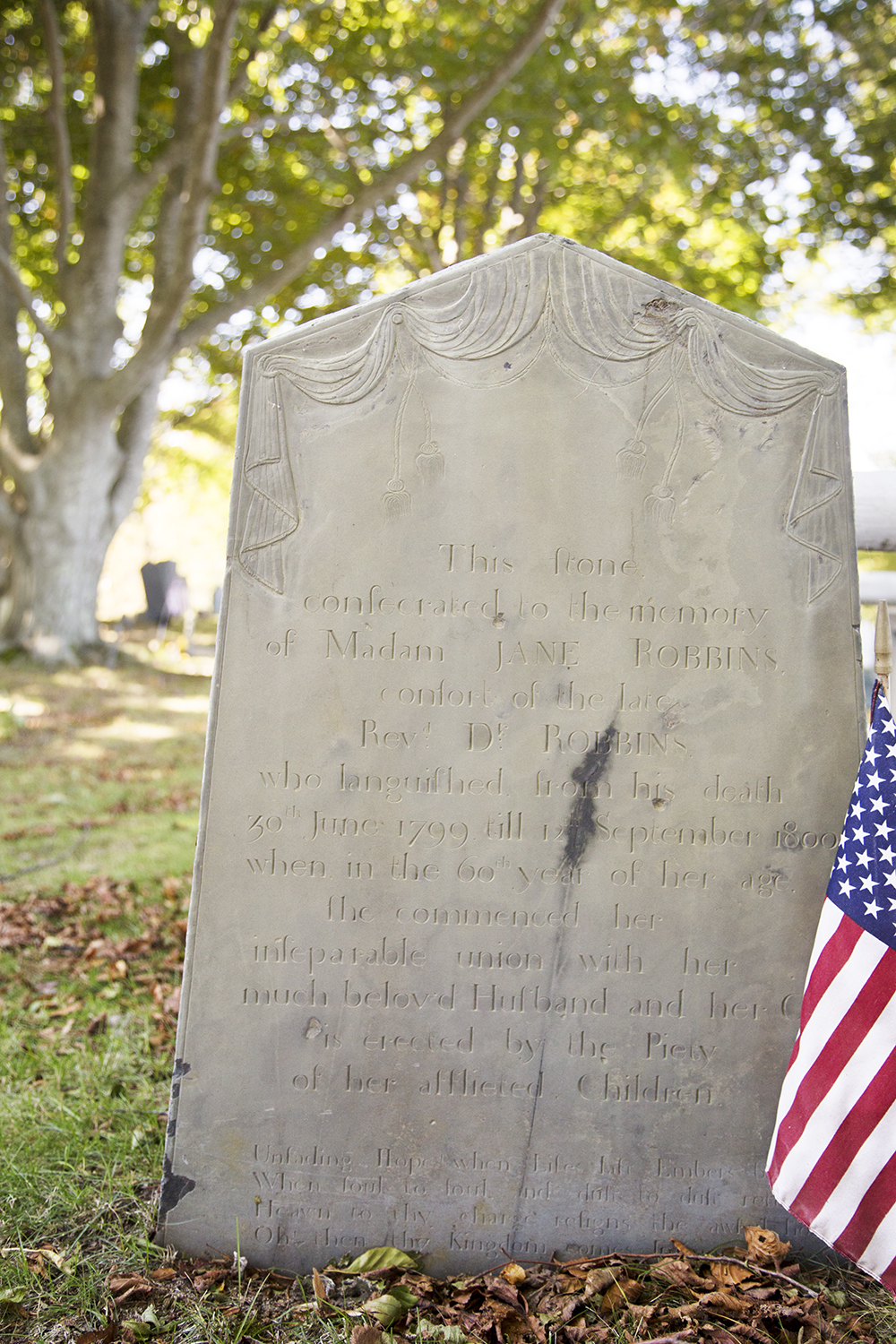And, as always this cemetery presents wonderful opportunities for photography.
 |
| Ansel and Martha Holmes, both age 90 when they died |
 |
| Charlott Barnes (nope, no "e" in Charlott), died Feb. 22, 1833 |
 |
| probable site of the first fort c. 1620-21 |
 |
| Madam Jane Robbins, died Sept. 12, 1800, wife of Rev. Chandler |
 |
| Rev. Chandler Robbins, died June 30, 1799 |
 |
| the Judson family |
So, from Burial Hill Cemetery we walked downhill to Main Street in search of a place for lunch. While there were a number of places with cute names like Sam Diego (Mexican) or Tuscany Tavern (really?) we settled on the very unassuming Cornerstone Cafe.
Located at the corner of North and Main streets, the Cornerstone is small on space but large on friendly service and tasty food.
After leaving the cornerstone we strolled down North Street to the waterfront. Five minutes later we soon found ourselves aboard the Mayflower II (it was part of the combination ticket with Plimouth Plantation).
We’re all familiar with the pilgrim landing at Plymouth Rock in 1620 but to actually see and walk on board the (replica) of this tiny ship is truly an eye-opening experience. One hundred and two people along with numerous animals, stores, tools, and the various necessities of starting a new life in a new corner of the planet aboard this ship for 66 days must have been both wretched and exciting all wrapped into one complicated package.
This reproduction vessel, built in England sailed to the United States in 1957. It took very little time to see but I'm glad we did. It will help put into proper perspective those times when the iPhone battery dies or the laptop won’t respond.
Oh, and there were also role players aboard -- mainly on the lower deck where the passengers lived, as well as contemporary guides to answer those questions "out of character."
 |
| the fore part of the ship |
Above you can easily see the rudder mechanism going out the stern of the ship note the cannon on the lower right.
 |
| looking forward |
From the Mayflower we strolled along the waterfront to the Rock itself and from there back up hill toward Main street.
Along the way we passed a small plaque on the sidewalk honoring the location of what was claimed to have been the first home of Mayflower passenger John Howland.
From Main Street we climbed back to Burial Hill, found our car and headed home.





























































